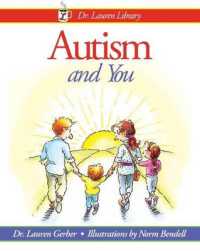Full Description
Being on call as a pediatric resident or a pediatric hematology-oncology fellow can cause great anxiety. In addition to the relatively common patient with chemotherapy-related fever and neutropenia, there is the anticipation of problems that a trainee may have read about but not yet actually seen - the adolescent newly presenting with a white blood cell count of 600,000/mm3, the 2 year old spitting up blood with a platelet count of 2,000/ mm3 and a hemoglobin of 5g/dL, the child who comes to the ER with difficulty walking and is found to have a paraspinal mass on MRI. Most issues can wait until the next day when more senior practitioners are around, but some are true medical emergencies and just can't.
This manual is intended as a one-stop solution for such frantic moments - a quick resource to bridge the hours between the start of night call and morning rounds that focuses on what needs to be done immediately to avoid hurting a patient. It offers succinct guidelines and algorithms to address the emergencies most likely to come up overnight. For those tempted to turn to AI for quick solutions, there are some salutary lessons from responses AI has given when asked about such emergencies.
Contents
Preface. List of contributors. Acknowledgments. List of abbreviations
I. Oncology
1. High White Blood Cell (WBC) Count. 2. Mediastinal Mass/ Superior Vena Cava (SVC) Syndrome. 3. Spinal/Paraspinal Mass. 4. Massive Hepatomegaly. 5. Tumor Lysis Syndrome (TLS)/Metabolic Abnormalities. 6. Differentiation Syndrome or Retinoic Acid Syndrome. 7. Fever in High-Risk Populations. 8. Typhlitis. 9. Methotrexate Toxicity. 10. Posterior Reversible Encephalopathy Syndrome (PRES).
II. Hematology
11. Severe Anemia. 12. Hemolytic Anemia. 13. Thrombotic Microangiopathy (TMA). 14. Transfusion Emergencies. 15. Sickle Cell Emergencies. 16. ACS in SCD. 17. Aplastic crisis in SCD. 18. Hemolytic crisis in SCD. 19. Pain/Vascoocclusive crisis. 20. Priapism in SCD. 21. Splenic sequestration. 22. Stroke/TIA in SCD. 23. Deep Venous Thrombosis (DVT)/Central Venous Thrombosis. 24. Pulmonary Embolus (PE). 25. Arterial Thrombosis. 26. Arterial (Acute Ischemic) Stroke. 27. Heparin-Induced Thrombocytopenia (HIT). 28. Bleeding Emergencies. 29. Thrombocytopenia with/without Bleeding. 30. Hemophilia. 31. Von Willebrand Disease. 32. Vitamin K Deficiency. 33. Other Factor Deficiencies. 34. Neonatal Hematologic Emergencies. 35. Covid and Hematologic Emergencies. 36. Hemophagocytic Lympho-Histiocytosis (HLH).
III. Vascular Anomalies
37. Pain . 38. Cellulitis vs inflammation. 39. Effusions with/without organ failure. 40. Pulmonary Embolus in vascular anomalies. 41. Kasabach-Merritt Phenomenon.
IV. General
42. Managing Symptoms at the End of Life. 43. What to do when a patient dies. 44. What ChatGPT says: Postscript.
Index.






